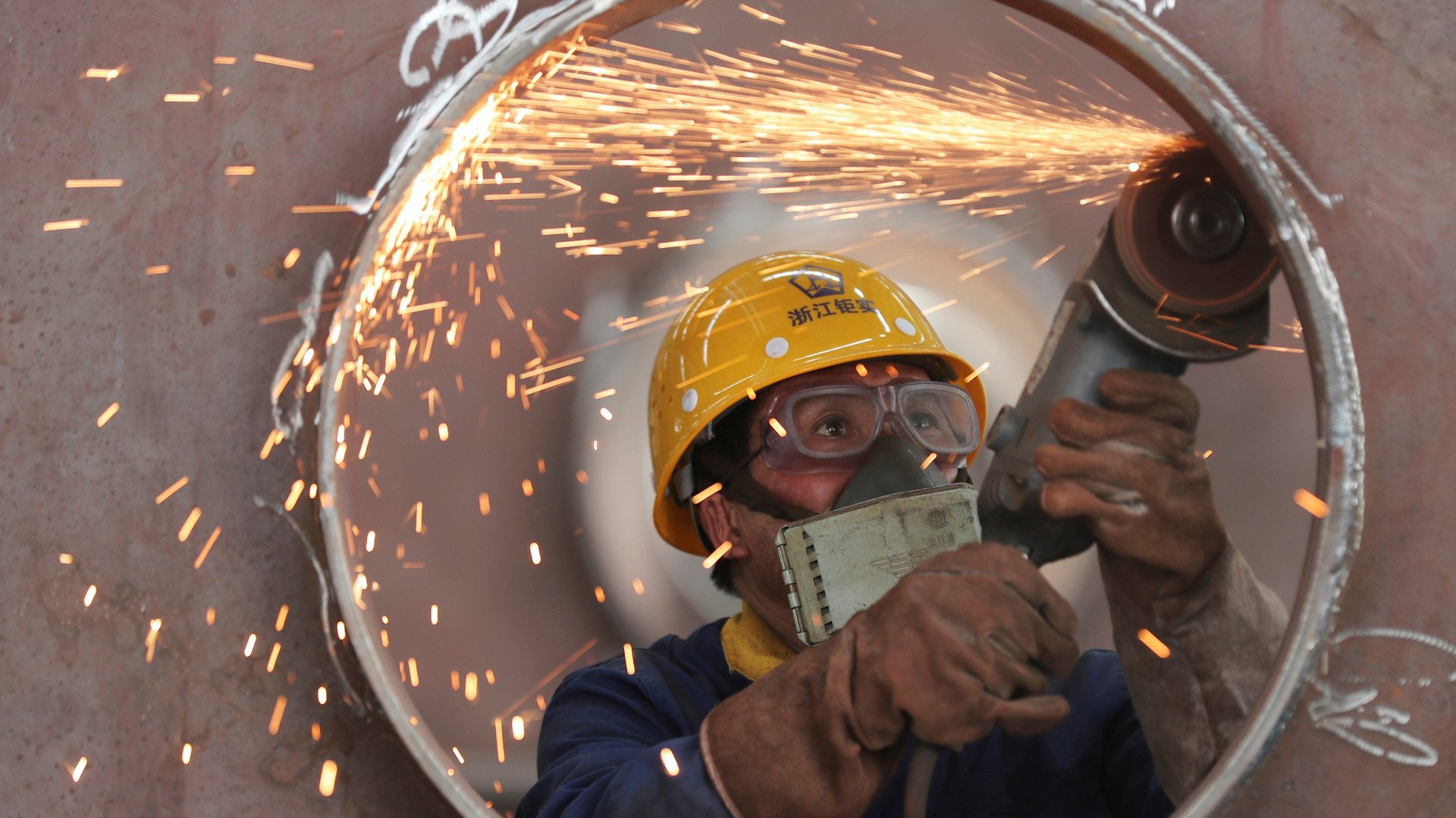Europe’s new tax on high-carbon imports is bad news for China
Last month, European lawmakers set the bloc’s climate goals in stone, legally committing to reduce net greenhouse emissions 55% below 1990 levels by 2030, and to reach net zero by 2050. Now they’re about to tackle the hard part: Agreeing on how to actually do that.


Last month, European lawmakers set the bloc’s climate goals in stone, legally committing to reduce net greenhouse emissions 55% below 1990 levels by 2030, and to reach net zero by 2050. Now they’re about to tackle the hard part: Agreeing on how to actually do that.
On July 14, the European Commission introduced a set of 12 proposals—that it’s calling “Fit for 55″—that legislators will debate and possibly approve over the next two years. They range from a total phaseout of gas-fueled cars, to tighter caps on emissions from power plants, vehicles, and farms, to new support for low-carbon aviation fuels, to a carbon tax on certain imports, to new measures to increase carbon uptake by forests. Overall, the package constitutes the world’s most detailed and ambitious set of climate change policies.
Overall, EU emissions are already declining, but far from fast enough, and emissions from transportation are still on the rise. Because the goal applies to the bloc as a whole, lawmakers will need to navigate a familiar but thorny divide between wealthier nations that are keen to plow full-steam ahead on climate action, and poorer ones that still rely heavily on fossil fuels. And they’ll need to decide how much support to channel to the former European colonies in Africa and elsewhere that are the most vulnerable to climate impacts.
Europe’s controversial carbon border adjustment
The most controversial of these proposals is the so-called carbon border adjustment, which would be the world’s first, requiring importers of certain goods to pay a tax to access the bloc. The exact rules remain undecided, but the tariff would likely cover steel, fertilizer, cement, aluminum, and electric power.
It would essentially extend the boundaries of the bloc’s existing cap-and-trade market—which imposes an internal carbon price on those sectors—to its global trading partners. Lower-emissions versions of those products—for example, steel manufactured with green hydrogen—would face a lower penalty.
The idea behind the adjustment is to give European manufacturers that are bearing the costs of legally mandated decarbonization a leg up over foreign competitors that are able to produce products in a lower-cost, higher-emissions way. The Commission estimates that the adjustment could eventually raise up to €14 billion per year, which could be channeled into clean energy programs around Europe or in developing countries, or go back into the pockets of European taxpayers to offset higher energy costs from other parts of the climate policy package.
The climate club
But the plan has already raised the hackles of officials in China, India, the US, and elsewhere, over concern that manufacturers there could find themselves shut out of lucrative European markets.
The inverse is also true, of course. The Blue Green Alliance, a US group that advocates for trade unions, backs the proposal, because it could give forward-thinking manufacturers in the US a serious competitive advantage over low-cost rivals in China. Some policy analysts have proposed the idea of a “climate club“—essentially an exemption from the tariff for countries that adopt climate policies commensurate with the EU’s (the US would be the most likely first member of such a club).
In any case, the plan is likely to become a main point of contention at the COP26 climate summit in November—and will need to survive expected legal challenges in the World Trade Organization.